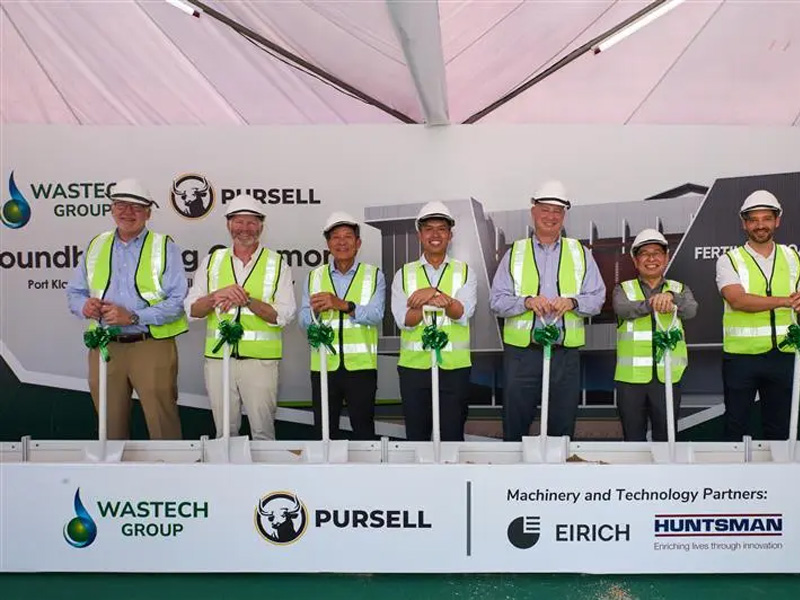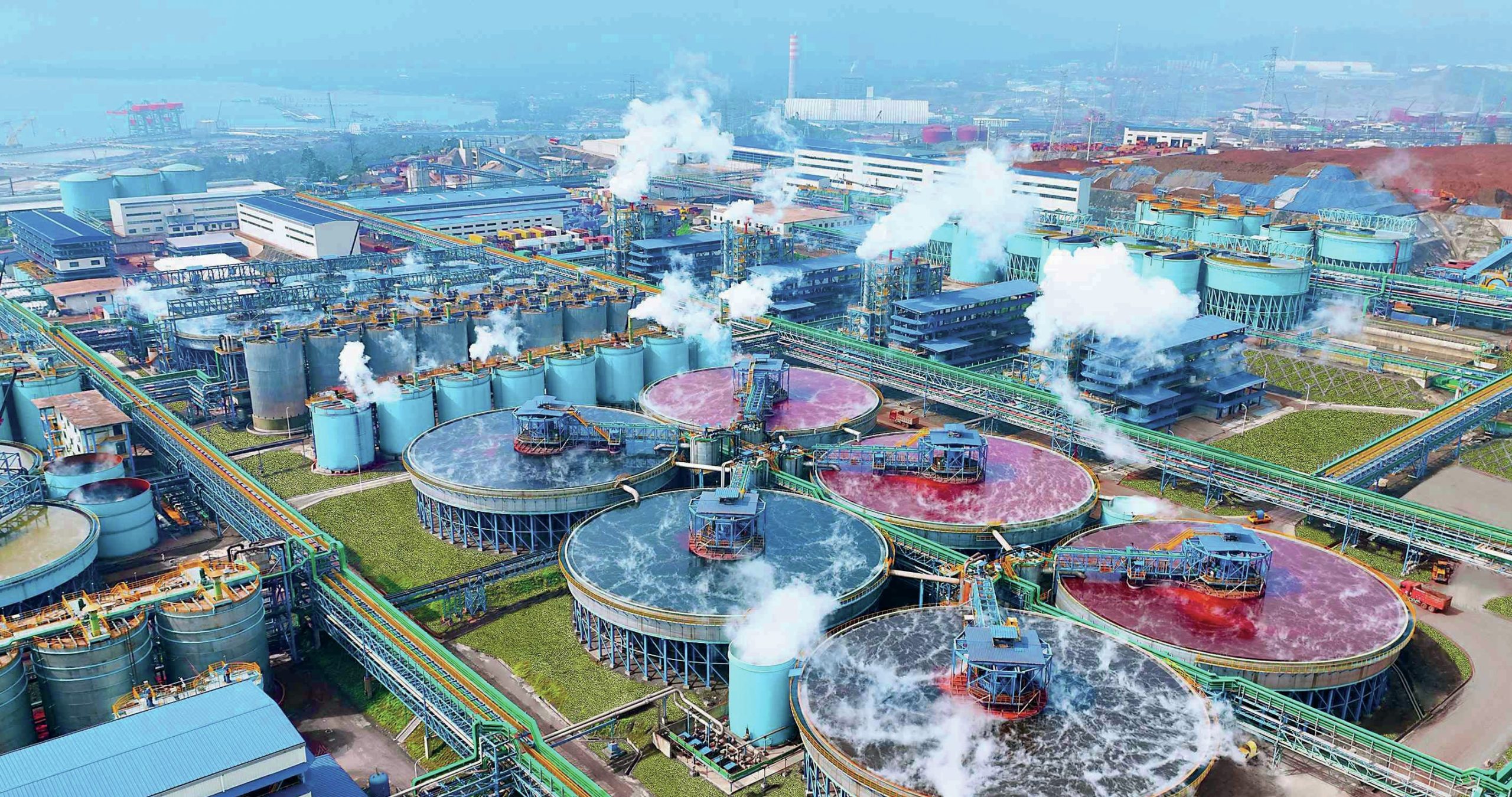Sulphur 402 Sept-Oct 2022
30 September 2022
Sulphur Industry News Roundup
SAUDI ARABIA
Aramco confirms development plan for Jafurah gas project
Saudi Aramco has confirmed a phased development approach for its $100 billion-plus Jafurah unconventional onshore gas project, which is expected to produce up to 2 billion cubic feet per day of gas by 2030, raising the company’s overall gas production capacity by 50% over that time frame. Aramco says that the first development phase for the Jafurah gas plant is likely to come on stream by 2025, and it is progressing with the phased development of a project that will reach a raw gas processing capacity of 3.1 bcf/d.
“The facility for the gas plant will come in two phases. The first phase would come in 2025. And the second phase will come on stream by 2027,” said Aramco chief executive Amin Nasser. The huge Jafurah project “will provide feedstock for hydrogen and ammonia production and will help meet expected growing local energy demand”, Aramco said in a statement. Aramco is looking to boost domestic gas production to free up almost 1 million bbl/d of oil from use in power production, boosting its oil export capacity.
Saudi Arabia’s dry natural gas production exceeded 4 tcf in 2020 with the commissioning of the Fadhili gas processing plant and the commencement of processing natural gas from non-associated sour gas fields in the east of the country. Most of the incremental gas production in the country is likely to come from the Jafurah development, which is also the largest non-associated gas field in Saudi Arabia, with over 200 tcf of proved reserves.
In late August, Worley was awarded two project management service contracts for Aramco’s unconventional gas program in North and South Arabia and Jafurah. Under the contracts, the company will provide front-end engineering design (FEED), detailed design support, project management services and construction management services. The term of both contracts is three years with an option for an extension for a further two years.
“Being part of a project that not only looks towards sustainability but also contributes to boosting regional economy demonstrates Worley’s commitment to developing future growth in the location,” said Eissa Aqeeli, Senior Vice President and Location Director, Saudi Arabia and Bahrain.
CANADA
Northern Nutrients produces new nitrogen sulphur fertilizer
Northern Nutrients has launched a new nitrogen sulphur fertilizer that contains nitrogen stabilisers evenly dispersed throughout the prill. The 38% nitrogen and 18% sulphur fertilizer, Triple Kick, also contains a source of carbon, which together with the sulphur and evenly dispersed stabilisers offers what the company describes as an industry first nitrogen and sulphur source designed to limit volatilisation and leaching.
“With an increased global focus on improving nitrogen efficiency and reducing nitrous oxide emissions, we believe our innovative Triple Kick fertilizer offers a one of a kind solution in the global nitrogen market, especially in light of the recently proposed regulation by the Canadian government aimed at reducing fertilizer emissions by 30%,” said founder and CEO Ross Guenther. “The initial market reaction to our new product has been phenomenal as we ramp up production for the fall season.”
Triple Kick will be produced in Northern Nutrients’ enhanced urea fertilizer manufacturing facility outside of Saskatoon, Canada. The facility uses Shell Thiogro technology, a patented process for the incorporation of micronized elemental sulphur into urea, resulting in a sulphur form that is available to plants across the growing season. The same plant also manufactures Arctic S 11-0-0-75 enhanced sulphur urea fertilizer which commenced production in April of 2022.
UNITED STATES
GTC Vorro and RATE announce collaboration
GTC Vorro Technology, a turnkey provider of environmental services and process technologies to oil and gas, refining, petrochemical and chemical companies, has entered into an agreement with Rameshni & Associates Technology and Engineering (RATE), a specialty engineering firm providing process technologies for sulphur processing and acid-gas removal. GTC Vorro and RATE will offer process technology solutions to customers along with full-service sulphur removal. The two companies will combine their sulphur technology and engineering services, providing innovative services including: licensing, engineering, consulting, training, pre-commissioning, technology commercialisation, performance testing and troubleshooting.
Joseph Gentry, vice president, GTC Vorro, said, “We are continuing to push the boundaries to achieve zero sulphur emissions. By teaming with RATE, we can combine our expertise to expand our capabilities and services.”
Mahin Rameshni, president and CEO, RATE, said, “We are delighted to work in collaboration with GTC Vorro. Together, we can provide state-of-the-art technology to meet all of our customers’ needs.”
Lithium sulphur battery development
A team of researchers mostly based at the Massachusetts Institute of Technology (MIT) have developed a new battery architecture using aluminium and sulphur as its electrode materials, with a molten salt electrolyte in between. In a paper in the journal Nature, MIT materials chemistry professor Donald Sadoway, along with 15 others at MIT and in China, Canada, Kentucky, and Tennessee, explain that the aim was to develop something better than lithium-ion batteries for small-scale stationary storage, and ultimately for automotive use. In addition to being expensive, lithium-ion batteries contain a flammable electrolyte, making them less than ideal for transportation.
The battery cells can endure hundreds of cycles at high charging rates, with a projected cost per cell of about one-sixth that of comparable lithium-ion cells. The molten salt the team chose as an electrolyte also prevents the formation of dendrites, narrow spikes of metal that build up on one electrode and eventually grow across to contact the other electrode, causing a short-circuit and hampering efficiency.
PORTUGAL
Sustainable aviation fuel project
The Navigator Company and Hamburg-based developer P2X-Europe are to create a joint venture, P2X-Portugal, to develop a world-class production facility for industrialscale production of sustainable aviation fuels – carbon-neutral synthetic kerosene, based on green hydrogen and biogenic CO2 . The is based on Portugal’s renewable energy sources and on CO2 generated by Navigator’s ‘biorefineries’ using carbon from sustainable forests. P2X-Europe is a global pioneer in power-to-liquids project development and technology and can tap into its parent companies’ H&R Group and Mabanaft market expertise in waxes for the chemical-pharmaceutical industry and in liquid fuels. The project will take up to 280,000 t/a of biogenic CO2 with carbon capture and several hundred MW of renewable energy capacity to manufacture 80,000 t/a of sustainable aviation fuel in its final form. The first phase will have half of that capacity, with a projected capex of e550-600 million. Subject to a positive final investment decision by mid-2023, the Project is scheduled to start commercial operations in the first half of 2026.
SPAIN
TUBACEX returns to profit
TUBACEX results for the first half of the year show sales of e353.8 million, double the figure for the same period last year, with profit before tax of e10.4 million compared to a loss of e28 million in 1H 2021. In recent years, the company has promoted geographic expansion and sectoral diversification and has also reorganised its production. The sales strategy followed in recent years has made it possible to access different framework agreements with leading players in the industry, such as the agreement entered into recently with the Abu Dhabi National Oil Company (ADNOC) for a value in excess of 30,000 t/a over a period of ten years for the supply of comprehensive solutions for gas extraction in the UAE and the construction of a new plant in Abu Dhabi.
MALAYSIA
Shell and Petronas agree to develop Rosmari-Marjoram
Shell and Petronas have taken the final investment decision to develop the Rosmari-Marjoram gas project in Sarawak, Malaysia. The Rosmari-Marjoram fields are 220 km off the coast of Bintulu, Sarawak, and will be powered by renewable energy, using solar power for the offshore platform.
“Rosmari-Marjoram will help to deliver a secure and reliable supply of energy, responsibly and efficiently,” said Shell Upstream director Zoe Yujnovich. “This demonstrates our Powering Progress strategy – powering lives, generating value, and reducing emissions by using renewable energy to power Rosmari-Marjoram.”
Ivan Tan, country chair and senior vice president Upstream Malaysia said, “The support and partnership from Petronas and the government of Sarawak are critical to achieving this milestone with Rosmari-Marjoram. Shell has a long and proud history in Sarawak, and we look forward to contribute further to Sarawak and Malaysia’s economic growth through investments in competitive and resilient projects.”
The Rosmari-Marjoram aims to ensure a sustained gas supply to the Petronas LNG complex. It comprises a remotely operated offshore platform and onshore gas plant, with infrastructure that includes one of the longest sour wet gas offshore pipelines in the world stretching more than 200 km. Rosmari-Marjoram project is designed to produce 800 million scf/d. Gas production is expected to start in 2026.
UNITED ARAB EMIRATES
ADNOC awards contracts for Hail and Ghasha
The Abu Dhabi National Oil Company (ADNOC) has announced the award of two contracts totalling $2 billion to ADNOC Drilling for the Hail and Ghasha development project. The contracts comprise $1.3 billion for integrated drilling services and fluids and $711 million for providing four island drilling units. A third contract, valued at $681 million, was awarded to ADNOC Logistics and Services for providing offshore logistics and marine support services. The contracts will cover the Hail and Ghasha drilling campaign over a maximum of ten years.
Production from Ghasha is expected to start around 2025, ramping up to produce more than 1.5 billion scf/d of natural gas before the end of the decade. Four artificial islands have already been completed, and development drilling is underway. In November last year, ADNOC and its partners awarded two engineering, procurement and construction (EPC) contracts for the Dalma Gas Development Project, within the Ghasha concession as well as a contract to update the front-end engineering and design (FEED) for the Hail and Ghasha project to optimise costs and timing, as well as potentially accelerate the integration of carbon capture.
IRAN
IOOC working on phased Esfandiar oil development offshore Iran
The Iranian Offshore Oil Company says that it aims to implement the first stage of development of the Esfandiar oil field, 95km southwest of Kharg Island in the Arabian Gulf, within the next three years. CEO Alireza Mehdizadeh told local news that the development plan has been approved by the National Iranian Oil Company and a licensing round will shortly be held for the development.
“Based on the results of a comprehensive study of the field, the design, construction and installation of a well platform and the drilling of four production wells have been proposed in the first phase, and the production fluid from this field, after being transferred and processed at the Abouzar platform, will be transferred to Khark Island,” Mehdizadeh said.
IOOC has also completed the shore pull operation for the new 110 km 32-inch pipeline of Phase 16 of the South Pars gas field, terminating at the receiving station at Asalouyeh in southern Iran. The new pipeline will be laid between the south coast of the Phase 16-15 refinery in Asalouyeh and the offshore Phase 16 platform and will transport South Pars sour gas, also ensuring stable production on the SPD16 platform.
KAZAKHSTAN
Production returns at Kashagan
Oil production at Kazakhstan’s giant offshore Kashagan field is ramping back up, according to the North Caspian Operating Company (NCOC) operating consortium after production was suspended following a gas leak on August 3rd. The field was shut for a week after signs of a gas leak closed the Bolashak oil and gas treatment unit, possibly caused by corrosion of pipelines or equipment. Sulphide corrosion caused by hydrogen sulphide in the sour gas shut the project down in 2013 for over a year during the initial development phase, when underwater sections of the pipeline to the onshore processing station had to be released. Oil production at Kashagan was 317,000 bbl/d in the first six months of 2022, 2% down on the previous year. NCOC is run by Kazakh state-owned Kazmunaigaz, Shell, ExxonMobil, Total, Eni, CNPC and Japanese firm Inpex.






